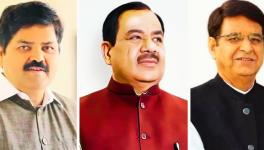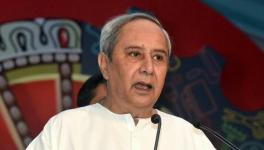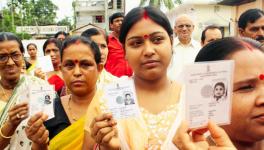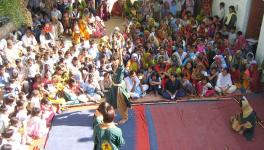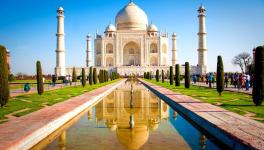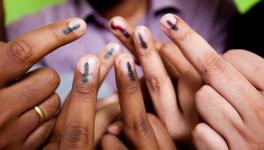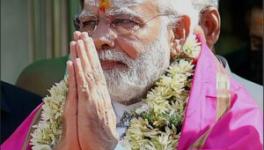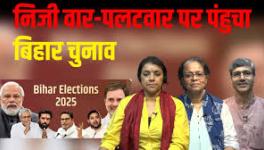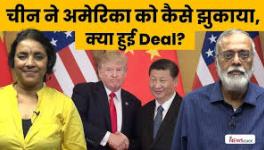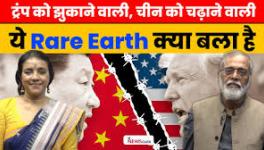Is the Misuse of Religion Tainting India’s Electoral Process?
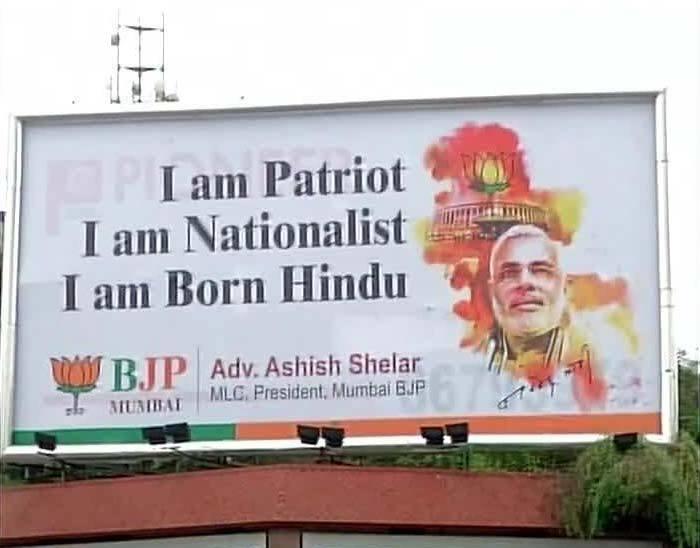
Is the Misuse of Religion Tainting India’s Electoral Process?
For decades now, especially since the sharp rise of political parties that espouse sharp religious (and often antagonistic and inciteful) sentiments, electoral politics has been coloured by communalism.[1]
Under consideration by the Supreme Court of India are several petitions that raised and interpreted this issue and over which appeals and reviews were filed. A three judge bench of the Supreme Court of India (Justices JS Verma, Saran Singh and Venkataswami), in 1996, held Shiv Sena supremo, Bal Thackeray to be guilty of a corrupt electoral practice under section 123 (3) and 123 (3A) of the Representation of People’s Act. The interpretation of section 123(3) however was narrow. The three speeches made by Thackeray on November 29, 1987, December 12, 1987 and December 10, 1987 were made in support of the then mayor of Mumbai, Ramesh Prabhoo, contesting the assembly elections.
The speeches themselves leave very little to the doubt or imagination.
Here is what Thackeray said, then:
1.12.1987: Reported extensively in the Urdu and Marathi newspapers with the photographs under the title "Hindu Dev- devtavareel Teeka Sahan Karnar Nahi Thackeray" (We will not tolerate the criticism of Hindu gods and goddesses - Thackeray)
9.12.87: At another election meeting which took place from 9 a.m. to about 12 midnight at Khar-Danda, near Shankar Temple. This meeting was addressed by Bal Thackeray, respondent No. 1, Harish Chandra Dattaji Salvi (a Shiv Sena leader) and Shambhoo Maharaj, a religious leader from Gujarat. In the said meeting Bal Thackeray, while addressing the audience stated as under : "Hinduism will triumph in this election and we must become hon'ble recipients of this victory to ward off the danger on Hinduism, elect Ramesh Prabhoo to join with Chhagan Bhujbal who is already there. You will find Hindu temples underneath if all the mosques are dug out. Anybody who stands against the Hindus should be showed or worshipped with shoes. A candidate by name Prabhoo should be led to victory in the name of religion."
10.12.87 a meeting was held from 9 p.m. to about 12 midnight at Vile Parle (East) at Shahaji Raje Marg. This was addressed by Bal Thackeray, Shambhoo Maharaj, Ramesh Mehta, Rishi Kapoor, Jitendra Madhukar Joshi and Ramesh Prabhoo, In this meeting Shri Thackeray uttered the following words while addressing the meeting : "We have come with the ideology of Hinduism. Shiv Sena will implement this ideology. Though this country belongs to Hindus, Ram and Krishna are insulted. (They) valued the Muslim votes more than your votes; we do not want the Muslim votes. A snake like Shahabuddin is sitting in the Janta Party, man like Nihal Ahmed is also in Janata Party. So the residents of Vile Parle should bury this party (Janata Party)."
[The above utterances in these three meetings were cited in the petition that challenged and established that the inciteful speeches of Thackeray on behalf of Ramesh Prabhoo in the elections, were examples of promoting the feelings of enmity between different classes of citizens of India, the sole purpose in doing so and making the appeal was to canvas votes in favour of the the candidate, Prabhoo.]
It is however on the crucial aspects of the interpretation of the section of the law, section 123(3) and the relationship between the candidate contesting the election and ‘his’ religion as also the relationship (and thereby the legal culpability) of a particular candidate with the manifesto of his party (and whether the candidate can be held legally bound to it) that the arguments will evolve and be decided.
Hence the judicial deliberations will have lasting implications, especially on those supremacist outfits who unashamedly appeal to exclusivity of the faith of candidates to garner votes.
Is a contesting candidate an ‘agent’ as defined under the Representation of People’s Act and is a ‘leader’ of the party, who campaigns for him also an ‘agent’ as defined and liable for legal restrictions under the Act ? Political parties are registered under Section 29(a) of the Act.
If a leader of this party so registered (under the Act) makes a speech that violates the Constitution, is inciteful (and by being a corrupt practice of misusing religion for electoral ends), i.e. if such a speech is violative of Section 123(3) of the Act, what are the consequences for such a ‘leader’? Sometimes during an election campaign, a candidate actually contesting the election is present at the time when such a speech is made by a 'leader'; on occasion he is absent. There are posters, videos and other materials circulated (that are violative of the Election Law, inciting voters against other faiths); can a candidate be held guilty of violation of the Election Law or not? These will be the key issues deliberated upon.
The Bombay High Court in its long line of judgements delivered on the issue (relating to a campaigns by the Shiv Sena-BJP alliance at the time ) was categorical. It interpreted the ‘Hindutva’ plank as a clear violation of sections of the Representation of People’s Act. In appeal, the Supreme Court judgements have been mixed. While some aspects of the judgements of the Bombay high court have been upheld by Supreme Court benches including the one headed by Justice Variava and another bench consisting of Justices NP Singh, Ahmadi and Punchi -- concluding that the plank of majoritarian Hindutva espoused during elections, clearly violated both the Constitution and Indian election law-- Justice Verma in Dr Ramesh Prabhoo v/s Prabhakar Kunte while upholding Section 123(3) and castigating Thackeray’s speeches on grounds of decency, indirectly gave some judicial validity to the ‘one nation, one culture’ ideology which is at the base of Hindutva. Subsequent manifestos of the Rashtriya Swayamsevak Sangh (RSS)-inspired Bharatiya Janata Party (BJP) have used this as ultimate validation of their ideology (1998, 2004, 2009).
The Indian constitution is both a Legal and a Social Document. Our Freedom Struggle, unique in that it was based on “Truth and Non Violence” took within its fold all sections of society, the rich and poor, men and women, youth all religious communities, be it Hindu, Muslim, Christian, Parsis, Sikh, Jain. In fact all castes and communities. The Indian Constitution --the result of detailed Parliamentary debates -reflects not only the values of the Freedom Struggle but also the values enshrined in the Universal Declaration of Human Rights!
For decades now, the Sangh driven BJP has blatantly challenged the Rule of Law with Election Campaign(s) that are Polarising and Divisive. In the past few months of 2016 this has been visible, especially in Uttar Pradesh (UP)
In April-May 2016, Uttar Pradesh, the state that signals the political fortunes for the country, was agog with yet another potentially divisive controversy stoked by the Sangh-inspired Bharatiya Janata Party (BJP). A few months ago, a Poster of UP BJP Chief, Keshav Maurya as Lord Krishna was spotted in many parts of UP; it uses, yet again, religious symbols as a start up to its campaign ten months before the state elections due anytime before February 2017, signaling the beginning of a campaign that will bank on polarising the voter on religious lines.
This poster, that was spotted in Varanasi, prime minister Modi’s constituency, depicted UP BJP president Keshav Prasad Maurya –a man with reportedly several criminal cases pending against him -- as ‘Lord Krishna’ and other politicians including Chief Minister Akhilesh Yadav as ‘Kauravas’. Such imagery blatantly violates the law on mis-using religion for political gain. The election law, Section 123 (a) and 123 (3) of the Representation of People’s Act becomes effective once an election is announced. There are chances that we shall see more of the same provocative electioneering as dates for the crucial state elections draw near.
This peculiar brand of politics and campaigning has been, for several decades now, BJP and the Sangh’s USP (unique selling point). Gujarat or Delhi, Maharashtra, Assam or Kerala, its singular success has been the defiance of Indian law to galvanise votes on religious lines.
Ten years ago, in the run up to the UP elections of 2007, the party had been severely reprimanded by the Election Commission of India (ECI) that had even directed that an FIR be filed against senior BJP leaders, for the widespread circulation of a CD containing targeted hate mongering released by the BJP's state unit at the instance of the central leadership. The Election Commission at the time had directed the filing of an FIR against senior Bharatiya Janata Party leaders -- Lalji Tandon and others -- involved in the production of the controversial party election CD allegedly making a reference to Babri and Godhra train arson of 2002. The CD had been officially released and widely circulated.
The contents of the CD brazenly released by the BJP's state unit -- that claimed it had got the clearance of the central leadership -- were found to be so offensive that independent citizens groups as well as political parties had appealed to the EC to de-recognise the BJP. The Commission had issued a show-cause notice to the BJP on the matter.
Composite Culture
The Indian Constitution incorporates within it a sense of Nationalism known as Territorial Nationalism, where every one born within the territory of India, is an Indian. The fundamental principle that all Citizens within the territory of India, either by birth of or by acquisition are equal whether he/she is Hindu, Muslim, Christian, Buddhist, Jain or Parsi or atheist! The Mandate of the Constitution is to promote tolerance and harmony amongst the people of India transcending religious linguistic, religious or section or sectional diversities and to preserve the rich heritage of our Composite Culture.
Implications of Interpretation
While the 1996 judgement of three judges of the Supreme Court, in many ways gave a fillip to the proponents of Hindutva, the said judgment has been disagreed with by two Constitutional Benches of the Supreme Court, subsequently. This is why the matter and legal issues, crucially related to the interpretations of the Constitution and Election Law, now lies referred to a larger, seven Judge Bench.
In the case of Narayan Singh v/s Sunderlal Patwa, the five bench judgment of the Supreme Court disagreed with Justice Verma’s judgment and referred it to larger bench of seven Judges. It has been argued that in delivering the 1996 judgement, Justice Verma overlooked the Supreme Court judgement in both the S.R. Bommai case and the Kartar Singh case and gave a restrictive meaning to the definition of corrupt practice under section 123(3)A of the Representation of People’s Act. The Court held that it would not amount to a corrupt practice so long as the candidate did not appeal to the voters on grounds of ‘his’ religion even though he appealed to the voters on the grounds of the religion of the voters!
Similarly in the case of Abhiram Singh v/s C.D. Oomachand, three Judges Bench headed by Justice K. Ramaswamy referred the entire case to a five Judges Bench holding inter-alia that “we are of the view that the entire case requires to be heard and decided by a larger Bench of five Judges since the decision thereon impinges upon the purity of the election process which gets..... and becomes fraught with the deleterious effect in a democratic Polity!"
The words of Justice Ramaswami have indeed proven to be prophetic. The 1996 judgement has held sway since 1996 along with another judgment of the Supreme Court (Manohar Joshi Vs. N.B. Patil) where the Court unfortunately held that the statement by Shri Manohar Joshi that the “First Hindu State will be established in Maharashtra did not amount to Appeal on grounds of Religion!”
This interpretation by the Supreme Court on ‘Hinduism’ and ‘Hindutva’ will now be thoroughly re-visited. While two judgements have held that there is no difference between Hindutva and Hinduism, further holding that the term Hindutva is related more to “way of life of the people in the subcontinent”….. “The word is used and understood as synonym of “Indianisaton i.e.development of uniform culture by obliteration the differences between all the cultures co-existing in the country”, other judicial interpretations will now come into play. Most crucially, the decisive arguments of the Supreme Court in the SR Bommai case, both on the question of election law (123-3 of the Representation of People's Act), Secularism and the Basic Structure of the Indian Constitution will prove pivotal.
Supremacist and communal forces have looked upon the 1995 and 1996 judgement(s) as Judicial Imprimatur of their Divisive Ideology. Since the time Hindutva/Hindu Rashtra came up as an assertive phenomenon within the Indian political scene, divisiveness has gone up by leaps and bounds and the polarisation between communities, increased. Today, and quite brazenly, the intimidation of religious minorities is taking place under the flag of Hindutva and Hindu Rashtra.
Contrary to the Constitutional mandate of inclusiveness and our composite culture this narrower judicial interpretation signals an exclusionary jurisprudence and hence it’s re-visitation is crucial for the Constitutional vision and its secure future within India.
Hindutva and Hinduism
It is questionable if Courts are theologically and sociologically equipped to define the term, Hinduism. For some judges, Hinduism and Hindutva are synonymous. Divergently, in an equally important verdict, the S.R. Bommai case Judges have quoted Swami Vivekanand and Mahatma Gandhi to show Hinduism’s ethos of tolerance and respect of all religions.
“Swami Vivekanand stated “that right of religious system and ideals is the same morality. Myself say “Om” other say “Johova” another “Allah ho Mohmmad” another cries “Jesus”. According to historian Tapan Rayachaudhri “the Vivekanand was among earliest nationalist thinker to claim the Indo-Islamic past as part of the Indian Heritage” Mahatma Gandhi has stated “ The separate religions of Hinduism, Islam, Christianity, Buddhism are different, converging at the same point even as the tree has single trunk but many branches and leaves so there is one perfect religion but it becomes many as it passes through the human medium. The Allah of Muslims is the same as the God of Christians and Ishwara of Hindus” “You cannot be a true Hindu if you hate any other religion. I consider myself a follower of Islam, Christianity, Zoroastrianism and every other religion because I am a true Hindu”
Hindutva
For critiques of the narrower interpretation, Hindutva is certainty not synonymous with Hinduism: Savarakar’s work published in 1923 titled “Hindutva who is a Hindu?” appears to have been ignored when the judgement was penned. Savarkar was quite categorical in defining nationhood. According to him “A Hindu means a person who regards his land of Bharatvarsha from the Indus to the Seas as is father land (Pitrubhumi) as well as his holy land (Punyabhumi) that is cradle of his religion” Referring to Mohmeddan and Christians Savarkar says ’Hindustan’ to them is father land but to them it is not Their Holy Land which is far off in Arabia or Palestine! “ These are the essentials of Hindutva- a Common nation (Rashtra), a common race (jati) and a common civilisation (Sanskriti), Sanskriti is preeminently implied by the word Punyabhumi as it precisely Sanskriti including in sanskar i.e. rites and rituals ceremonies and sacraments that makes a land Holy land”
For the minorities then the option of retaining both their faith and their Indian Nationality is extinguished, under this narrow interpretation. This is the reality of Hindu Rashtra based on Hindutva! Hindutva is not a restatement of Hinduism. It is the formulation of a new political ideology of exclusivist nationhood.
Hindutva, in fact, is a synthesis of Religion and Politics. It is opposed to the values which came to be associated with the secular and democratic Principles enshrined in the Indian Constitution, which the Supreme Court itself has declared to be the Basic Structure of the constitution. The concepts of Indianisation as interpretated by Verma’s Hindutva judgement as contrasted with the S.R. Bommai case are dramatically opposed. Hindutva is constantly referred to by the Rashtriya Swayamsevak Sangh (RSS) and has become part of political manifestos of both the B.J.P. and the Shiv Sena.
Can a religion be called a Way of Life just because it is so diverse? Religions are normally associated with Holy Books, Communitarian functions, ritual, ethical, norms and the authority of clergy which are the major visible symbols of a religion. The Hindu Religion too has all these traits and the existence of a hierarchical caste structure is a discriminatory manifestation of Hinduism. A 'way of life' is a broad term; it encompasses not merely religion but other factors related to region, language, customs, food habits, literary and cultural aspects of life which may not have to anything do with Religion. Religion cannot be the sole component in any person's way of life.
The Hindu Religious traditions have various streams, Sharmanism, Tantra, Bhakti, Seva and the Dominant Brahmanism. The ideology of RSS and Sangh Parivar has been dominated by Brahmanism and it is this exclusivist and supremacist ideology --Hindutva --that is also today professed as Cultural Nationalism. It is the Culture of the upper caste Hindu, the one resorting to Ram, the Gita and the Acharays. The one that sees Sanskrit as Dev Bhasha and is guided by the Laws of Manu. It is not the culture of Dalits, Bahujans and Adivasis, a vast section of Indians.
Hindutva is not merely an ideology that has been formulated antagonistic too the interest of the minorities but is also a narrow, rigid and authoritarian interpretation that militates against the majority of Hindus. It is certainly not synonymous with Hinduism. All these crucial aspects will be visited and re-visited during this judicial exercise which will have far-reaching consequences. The judicial interpretations will have a bearing on what constitutes the Basic Structure of the Indian Constitution.
A historic journey under an RSS-ruled government, will begin, in the Supreme Court, from tomorrow.
[1] Misuse and manipulation of religion and religious symbols for political ends.
Get the latest reports & analysis with people's perspective on Protests, movements & deep analytical videos, discussions of the current affairs in your Telegram app. Subscribe to NewsClick's Telegram channel & get Real-Time updates on stories, as they get published on our website.










